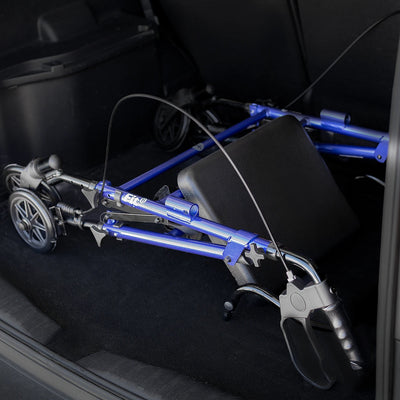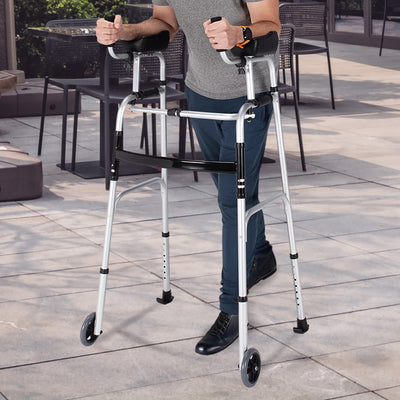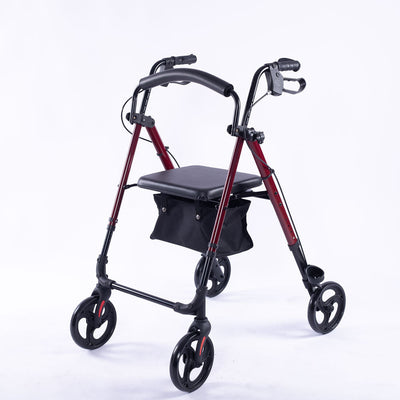Physical therapy and mobility aids go hand-in-hand when it comes to enhancing mobility and improving the quality of life for individuals with physical limitations. Whether you're recovering from an injury, managing a chronic condition, or adjusting to a mobility challenge, physical therapy offers invaluable support in the proper use and integration of mobility aids into daily life.
In this blog, we'll explore the important connection between physical therapy and mobility aids, and how the right combination can empower individuals in Australia to live independently and confidently. We'll also take a closer look at how the Mobility Aids Australia Hub can provide the best solutions for those seeking assistance in mobility challenges.
What Are Mobility Aids?
Mobility aids, such as walkers, wheelchairs, scooters, canes, and crutches, are tools designed to assist individuals with movement and mobility. These aids can be crucial for those who have difficulty walking due to injury, illness, or age-related conditions like arthritis or Parkinson's disease. They not only help people move from one place to another but also contribute to improving posture, relieving pain, and preventing falls.
However, simply using a mobility aid is not always enough. It’s essential to learn how to use these aids correctly to maximize their effectiveness, and that’s where physical therapy comes into play.
The Role of Physical Therapy in Mobility Aid Use
Physical therapy is a specialized treatment program designed to improve physical function and mobility. A physical therapist assesses a person’s condition, strength, flexibility, and coordination before developing a personalized treatment plan. The goal of physical therapy is not only to restore physical function but also to ensure that an individual can use mobility aids safely and effectively.
-
Proper Training and Education
One of the key roles of physical therapy is to educate individuals on how to properly use their mobility aids. For example, a physical therapist can show a patient how to adjust a walker for maximum comfort and stability. They can also teach techniques for sitting, standing, and walking with the aid, ensuring the user maintains proper posture and avoids strain. -
Improving Strength and Flexibility
Often, individuals using mobility aids may have muscle weakness or joint stiffness. Physical therapy focuses on building strength and increasing flexibility, which can make using mobility aids easier and more effective. Strengthening exercises, such as leg lifts, squats, and balance exercises, improve stability and coordination, which makes it easier to use a walker or cane with confidence. -
Fall Prevention
One of the most important reasons to integrate physical therapy with mobility aids is to reduce the risk of falls. A physical therapist can help a patient develop strategies to improve their balance and coordination, making them less likely to trip or fall while using a mobility aid. The therapist can also suggest modifications to the home environment, such as removing tripping hazards or adding grab bars, to create a safer living space. -
Individualized Rehabilitation Plans
Physical therapy is tailored to each patient’s unique needs. Whether recovering from surgery, dealing with arthritis, or managing neurological conditions, the therapist adjusts the treatment plan to accommodate specific mobility challenges. This ensures that the use of mobility aids is aligned with the individual’s abilities and limitations, optimizing their independence and comfort. -
Psychological Support
The adjustment to using mobility aids can sometimes be emotionally challenging. Many individuals may experience feelings of frustration, sadness, or a loss of independence. Physical therapists not only provide physical guidance but also offer psychological support, helping patients build their self-confidence and adapt to the changes in their lifestyle.
The Importance of the Mobility Aids Australia Hub
For those in Australia seeking mobility solutions, the Mobility Aids Australia Hub is a valuable resource. This online platform provides a wide range of mobility aids designed to suit various needs. From lightweight, portable walkers to power scooters, individuals can find options tailored to their specific mobility requirements.
In addition to offering high-quality products, the Mobility Aids Australia Hub provides expert advice on choosing the right aid for your situation. Their team understands that each person’s needs are unique, and they help guide customers through the selection process.
Furthermore, physical therapists can collaborate with the Mobility Aids Australia Hub to recommend the most suitable aids for patients undergoing rehabilitation. By ensuring that patients have the right mobility aids, physical therapists and mobility aid providers can work together to enhance mobility, improve safety, and promote independence.
Conclusion
The relationship between physical therapy and mobility aids is fundamental in ensuring that individuals can maximize their mobility and maintain independence. Physical therapy plays a critical role in teaching patients how to effectively use their mobility aids, improving strength, flexibility, and balance, and reducing the risk of falls. When paired with the right mobility aids, such as those provided by Mobility Aids Australia Hub, individuals can regain confidence and improve their quality of life.
Whether you are recovering from surgery, managing a chronic condition, or just seeking better mobility, the right combination of physical therapy and mobility aids can empower you to live your life to the fullest.









